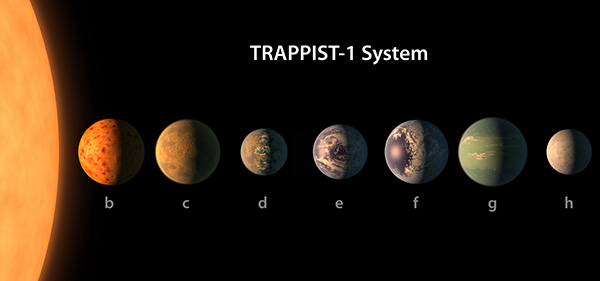LOS ANGELES - Seven planets similar to our inner solar system have been discovered revolving around a star about 40 light years away, the US space agency NASA announced on Wednesday.
"The discovery gives us a hint that finding a second Earth is not just a matter of if, but when," said Thomas Zurbuchen, associate administrator of NASA's Science Mission Directorate.
By using powerful space telescopes and ground-based observatories, an international team of astronomers discovered the first known system of seven Earth-size planets orbiting the nearby ultra-cool dwarf star TRAPPIST-1 in the constellation Aquarius, he said.
All of the planets could have liquid water - "key to life as we know it," NASA said.
Three of the planets are firmly located in the habitable zone, the area around the parent star where a rocky planet is most likely to have liquid water.
The discovery sets a record for the biggest number of habitable-zone planets found around a single star outside our solar system, according to NASA.
"With the discovery, we have made a giant, accelerated leap forward in the search for habitable worlds and life on other worlds," said Sara Seager, professor of planetary science and physics at the Massachusetts Institute of Technology.
The results were published on Wednesday in the journal Nature.
"The seven wonders of TRAPPIST-1 are the first Earth-size planets that have been found orbiting this kind of star," said Michael Gillon, lead author of the paper and the principal investigator of the TRAPPIST exoplanet survey at the University of Liege in Belgium.
TRAPPIST-1 is so cool that liquid water could survive on planets orbiting very close to it - closer than is possible on planets in our solar system.
|
 The relative size and composition of the TRAPPIST-1 planets are shown in this artist's conception released on Wednesday by the European Southern Observatory.Xinhua |
